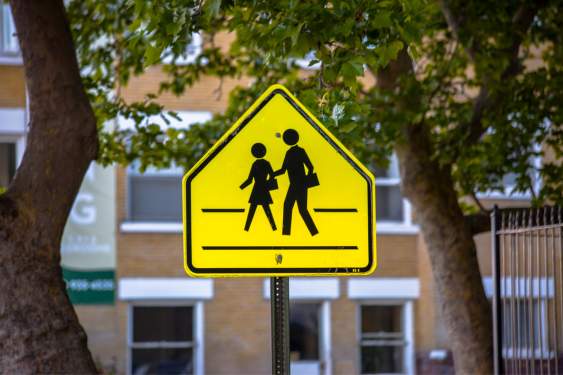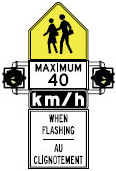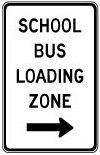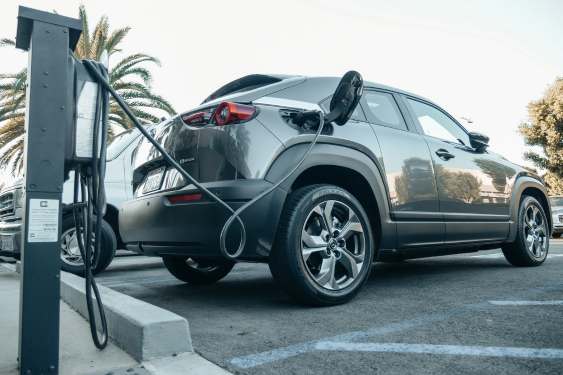Sep 1, 2023
How to drive safe in Ontario school zones

From September to June, school zones see increased traffic, which is why understanding school zone signs and safe driving in these zones is crucial as a driver.
A 2019 CAA poll found that nearly 70% of Canadians have witnessed a distracted driver in these areas, and 64% have witnessed speeding in a school zone. September is a dangerous month for pedestrians, with more fatalities than any other month.
As a driver, you must be vigilant for pedestrians and comply with school zone regulations - Buses, crossing guards, and children playing are just a few factors drivers must be cautious of.
Three main takeaways about Ontario school zones safety:
- A school zone is an area near a school or crosswalk with young pedestrians. It's marked by a yellow sign with two silhouettes of schoolchildren.
- Reduce your speed through school zones – the limit is usually 30-40 km/hr.
- Kids can be unpredictable. Be alert, minimize distractions, follow signage, and yield to pedestrians.
What’s on this page
What is a school zone?Common school zone signs in Ontario
What are the rules for driving in a school zone?
Can I pass in a school zone?
School zone safety statistics
School zone driving safety tips
FAQs for driving in school zones
What is a school zone?
A school zone is an area on a street near a school or crosswalk leading to a school with young pedestrians. School zones can be recognized by the yellow sign featuring silhouettes of two school children walking, and they may be within a community safety zone. There will also be signs that alert drivers of the reduced speed. There are often crossing guards and road markings to alert drivers of an upcoming school zone.
Common school zone signs in Ontario
You need to recognize and understand school zone signs to drive safely in school zones. Here are the most common road signs in school zones.
A school zone sign is a five-sided fluorescent yellow sign with pedestrians crossing. This means you are coming to a school zone and should slow down, be cautious and watch for children. |
 |
The flashing school zone sign also has flashing lights with the speed limit in effect during school hours. |
 |
Reduced speed limit ahead. These will often be yellow and sometimes have flashing lights. |
 |
Indicates an area where the community has identified there to be a high risk for pedestrians. Traffic related offences in this zone is subject to increased fines. |
 |
Drivers must stop for a school bus when signals are flashing. |
 |
You’ll see this sign on multi-lane highways with no centre median. If you see a school bus with flashing lights, all directions must stop. |
 |
A zone where school buses load or unload passengers without using the alternating lights and stop arm. |
 |
What are the rules for driving in a school zone?
School zones are put in place to ensure the safety of children. Here are the rules for driving in a school zone to consider.
- Recognize school zones: School zones can have crossing guards, lights, warning signs, speed bumps and flashing lights to alert drivers. They are notably recognized by the yellow sign featuring silhouettes of two schoolchildren walking. There will be signs to alert drivers of the reduced speed. Passing another vehicle, including buses, is illegal in a school zone. Keep an active eye on the road and know the school zones approaching.
- Follow the speed limit: The speed limit in school zones is between 30 and 40km/h. Always check for posted signs to reduce your speed and prevent last-minute braking. School zone speed limits are significantly lower than the roadway around the school.
- Yield to pedestrians: Drivers must yield to pedestrians and crossing guards in school zones. Watch out for children exiting cars and school buses.
- Yield to school buses: As a driver, you should always yield to school buses. Always stop when you see the red lights flashing. Do not pass school buses; it is dangerous, and you risk being fined $400-$2000 and earning six demerits.
Can I pass in a school zone?
Passing another vehicle or bus while in a school zone is illegal. No matter how slow the car ahead of you is going, it is dangerous to pass. Be patient and pay attention to what is going on around you to keep the community safe and lower your chance of a ticket.
School zone safety statistics
Are you curious about how safe or unsafe school zones can be? Here are some statistics from CAA.
- The top three unsafe motorist behaviours witnessed in school zones are speeding, illegal parking, and distracted driving, which can lead to increased Ontario car insurance.
- A quarter of drivers reported witnessing a near miss or collision in a school zone, and more than half involved a child.
- Almost half of Canadians have witnessed speeding in school zones.
- 6 in 10 Canadians say there are more unsafe school zone practices today than in the past.
School zone driving safety tips
Every school day in Ontario, close to 824,000 students travel in 16,000 vehicles. Ensure the safety of those around you with these school zone driving safety tips.
- Obey school crossing guards: Crossing guards are legally permitted to stop traffic and assist children crossing the street. Pay attention to the road and be mindful of areas where children are crossing.
- Slow down and obey the speed limit: School zone limits range between 30-40km/h. Slow down and be extra cautious when driving. You never know when and where a child could pop out from.
- Understand the school parking lot: Travel in the proper direction and designated lanes in a school parking lot—only park in spots that avoid unnecessary risk and give cars and pedestrians room to cross.
- Know your community school zones: Some crossings do not have school zone signage, but you are still required to follow all school zone driving rules. Any pedestrian crossing where a crossing guard is present and displays a school crossing sign is a school zone.
- Drive as though your kids are present: Stay alert and treat all school zones as if your children were present. Take the same precautions for other kids as you would your own.
- Minimize distractions: Avoid distractions like using your mobile phone or adjusting music when driving through school zones.
- Be patient: Following parking regulations in school zones to maintain traffic flow and visibility is important. Exercise patience and avoid aggressive driving behaviours in school zones, especially during busy drop-off and pick-up times.
- Yield to pedestrians: Always giving the right of way to pedestrians, especially those in crosswalks or school crossings, is important.
FAQs for driving in school zones
If you notice anyone who is not a safe driver in a school zone or did not stop for a school bus, you can report it immediately to police by calling 911. Be prepared to provide:
- Date and time
- Vehicle make, model, colour, and licence plate number
- Type of school bus (large, small)
- If the bus was stopped and had lights flashing
- If passengers were boarding or leaving the bus
- Which direction the vehicle was coming from
Traffic offences, such as not stopping for a school bus or speeding in a school zone, have stricter penalties, with increased fines and additional demerit points on the driver’s licence. These penalties are generally higher compared to similar offences committed outside of school zones due to the greater risk posed to children and pedestrians in these areas.
Failing to obey a school zone sign, such as driving above the speed limit or not giving way to people crossing the road, can lead to paying fines, receiving demerits, and facing higher premiums. The consequences vary depending on the nature of the violation and the traffic laws of the area.
Choose to safe driving in school zones
When driving through school zones in Ontario, it is important to be aware of the laws, fines, and safety tips in place to protect vulnerable road users. By following these guidelines, drivers can help create safer environments for children and pedestrians. Remember that safety should always be the top priority when driving through school zones.





